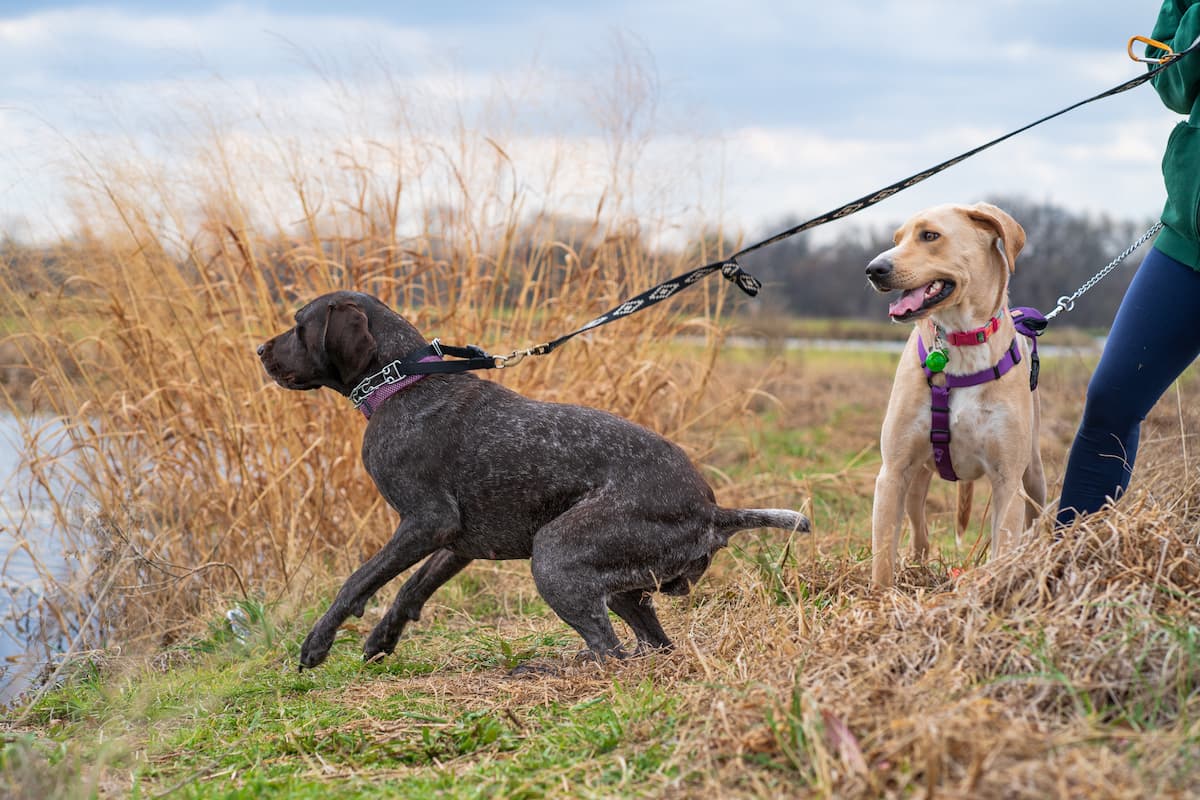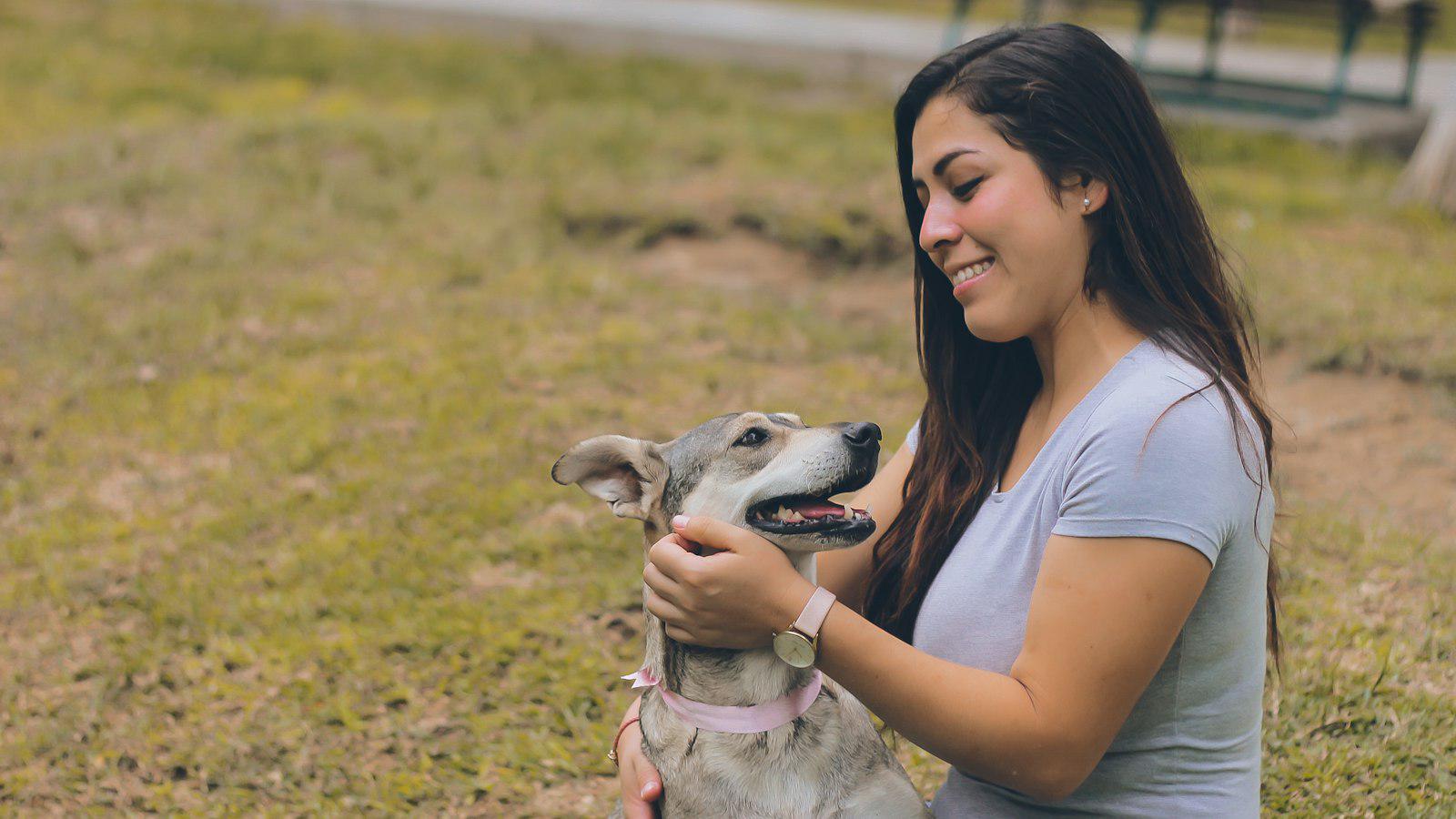Have you ever been walking your furry friend down the street, only to feel like you’re being dragged along for the ride?
Well, my friend, you’re not alone.
The struggle of dealing with a pulling pooch is something most dog owners can absolutely relate to.
Picture this: you put on your fancy outfit, all ready for a leisurely stroll, and instead, you find yourself in a tug of war with your four-legged companion.
But why oh why do our precious pups pull on their leashes with the strength of a thousand sled dogs?
Read on to answer the question: Why do dogs pull on their leashes?
Why do Dogs Pull on Their Leashes?
Dogs pulling on their leash can be quite a common issue for many pet owners out there.
But have you ever wondered why exactly they do this?
Here are some possible reasons for why dogs pull on their leashes:
Curiosity
Dogs are naturally curious creatures.
They have an innate instinct to investigate their surroundings, sniff new scents, and explore the world around them.
When they feel restrained by a leash, their natural inclination is to follow their nose and investigate everything that catches their attention.
This could be the smell of a squirrel, the scent of another dog, or even an interesting object on the sidewalk.
It’s important to understand that leash pulling is not an intentional act of defiance, but rather an instinctual behavior driven by curiosity.
Moving at Their Own Pace
Dogs pull on the leash is their desire to move forward or reach a particular destination.
Dogs are energetic beings, and they often have a strong urge to move at their own pace.
This could be due to their excitement to reach the park or simply to release their pent-up energy.
Pulling on the leash gives them a sense of control over their movement and allows them to satisfy their need for activity.
Additionally, some dogs might associate pulling with getting to their destination faster, as they have observed that their owners often walk faster when they engage in leash pulling behavior.
Excess Energy
Dogs are active creatures and need physical exercise to stay healthy and happy.
If they don’t get enough exercise through walks or playtime, they might channel their pent-up energy into pulling on the leash.
Think of it as their way of releasing their built-up frustration or boredom.
It’s like they’re saying, “Come on, human! Let’s go faster and burn off some of this energy!”
Need for Social Interaction
Dogs are social animals by nature and have a natural inclination to interact with their environment.
They might be pulling on the leash because they’ve spotted another dog or a person they want to greet.
Canines communicate through body language, and meeting and greeting other animals is an important aspect of their social behavior.
Pulling on the leash can be an expression of their excitement and eagerness to engage in social interaction.
It’s essential to remember that dogs are social creatures who thrive on positive social experiences, making leash pulling an instinctual way for them to engage with their surroundings.
Too Much Tension
One common mistake many dog owners make is applying too much tension on the leash.
This can inadvertently encourage dogs to pull even harder.
When we react by pulling back on the leash, it creates a tension-filled cycle that reinforces the behavior.
Instead, aim to keep a loose leash and use your body language and voice to redirect your pup.
Remember, consistency is key!
By rewarding them with praise and treats when they walk calmly by your side, you encourage them to maintain the behavior.
The Role of Training and Socialization in Leash Manners
A lack of proper training and reinforcement can also play a significant role in pulling.
Dogs are not born knowing how to walk politely on a leash; it’s a skill that needs to be taught to them.
If they haven’t received proper leash training, they might resort to pulling as their default behavior.
So, it’s crucial to invest time and effort in teaching your furry companion the proper way to walk on a leash.
Training plays a crucial role when it comes to leash manners.
By providing your dog with consistent and positive reinforcement, you can gradually teach them how to behave on a leash.
One effective technique is leash training, which involves teaching your dog to walk without pulling.
This can be achieved by rewarding them for walking next to you and implementing a gentle correction when they start to pull.
With time and patience, your furry friend will learn that pulling doesn’t get them anywhere, but walking calmly by your side does.
Socialization is another important factor in leash manners.
It involves exposing your dog to different environments, people, and animals from an early age.
This helps them develop confidence and adaptability, making them less likely to pull on the leash out of fear or excitement.
Socialization can be done through puppy classes, regular walks in different settings, and controlled interactions with other dogs.
By gradually exposing your dog to various stimuli and rewarding them for calm behavior, you can enhance their leash manners and overall obedience.
The Importance of Consistency and Patience in Leash Training Dogs
Consistency and patience are key when it comes to leash training your dog.
It’s important to establish clear boundaries and teach your dog that pulling will not get them what they want.
Here are some tips to help you on this journey:
Start with short, focused walks: Begin by taking your dog on short walks in quiet environments where there are fewer distractions.
This will give you the opportunity to practice loose leash walking without overwhelming your furry friend.
Use positive reinforcement: Every time your dog walks beside you on a loose leash, reward them with treats, praise, and affection.
This will reinforce their good behavior and make them more likely to repeat it in the future.
Be patient and consistent: Leash training takes time and effort.
It’s important to be consistent with your training methods and expectations.
Don’t give up if your dog doesn’t catch on right away.
With patience and persistence, they will eventually learn to walk calmly on a leash.
Remember, leash training is not about controlling or dominating your dog.
It’s about teaching them how to walk politely and safely by your side.
By practicing consistency and patience, you can help your dog overcome their pulling habits and enjoy peaceful walks together.
FAQ
Q: Why exactly do our furry buddies pull on their leashes?
A: One primary reason is simply their natural instinct.
You see, dogs are descended from mighty wolves who roamed the wild.
Wolves hunt in packs, and when they spot something interesting, they instinctively want to chase after it.
Your pup’s pulling may be an echo of that strong hunting instinct.
Q: So, is it impossible to curb this behavior entirely?
A: Not at all!
Another important factor behind dogs pulling is their excitement or eagerness.
They adore exploring their surroundings and can become overzealous when they come across interesting sights, smells, or fellow doggies.
Teaching our doggos some self-control through training can work wonders in reducing their pulling tendencies.
Q: Are certain dog breeds more prone to pulling?
A: Interestingly, yes!
Some breeds are bred for labor-intensive tasks like pulling sleds or herding livestock, so it’s no surprise that they may have a stronger inclination to pull.
Breeds like Huskies, Malamutes, and Border Collies are infamous for their pulling prowess.
However, with proper guidance and consistent training, any dog can learn to walk politely on a leash.
Q: Speaking of training, what can we do to mitigate our dog’s pulling?
A: The key here is patience, practice, and positive reinforcement.
Firstly, invest in a well-fitted harness rather than relying solely on a collar and leash.
A harness spreads the pressure evenly across your dog’s chest, not just their neck.
Secondly, teaching your pooch to walk beside you rather than in front is crucial.
Offer treats, praise, and exciting encouragement when they stick close or moderate their pulling.
With time, they’ll learn to associate loose leash walking with positive experiences.
Q: Can using aversive tools like choke or prong collars help in stopping the pulling?
A: Ah, not quite!
While it might be tempting to try quick fix solutions like choke or prong collars, it’s important to avoid them.
These tools may cause discomfort, pain, or even injury to your beloved pup.
Our goal should be to foster a trusting bond with our furry friends, focused on positive reinforcement rather than punishment.
Q: Are there any additional techniques we can use to tackle this leash pulling issue?
A: Absolutely!
Incorporating mental enrichment into your dog’s routine can work wonders.
By engaging their minds with puzzle toys, training games, or scent work, you’ll tire them out mentally, reducing their inclination to pull.
Additionally, regular exercise and playtime can help burn off their excess energy, making them more likely to walk calmly beside you.
Q: Do older dogs struggle with pulling leash as much as puppies?
A: Generally, older dogs tend to be calmer and have a better grasp of leash manners.
However, pulling can still happen if they haven’t received proper training or if they’re feeling extra excited or anxious about something.
It’s never too late to start teaching an old dog new tricks!
So, next time you find yourself in a mini tug-of-war with your dog during your evening stroll, take a deep breath, cherish the journey, and keep working towards leash harmony.
Happy walking, my friends!
The Bottom Line
Pulling is not necessarily a sign of disobedience or a misbehaving pooch, but rather a reflection of their energetic nature and natural instincts.
Dogs are hardwired to explore their surroundings and reach out to the world with their curious noses, often leading them to pull towards interesting scents or sounds.
But fear not, for we have also discovered some handy tips and tricks that can help alleviate the pulling and make walks more enjoyable for both you and your furry companion.
Remember to start with proper leash training, using positive reinforcement and rewards to encourage good behavior.
A well-fitted harness can also be a game-changer, spreading the pressure evenly and providing better control.
Patience and consistency are key as you work with your pup, teaching them loose leash walking and reinforcing the desired behavior.
Remember, Rome wasn’t built in a day, and neither will your four-legged friend become a master walker overnight.
So next time you find yourself being dragged down the street by your enthusiastic canine companion, take a deep breath and remember why they’re doing it.
Embrace their zest for life and adventure while using the knowledge and techniques we’ve gathered here.














